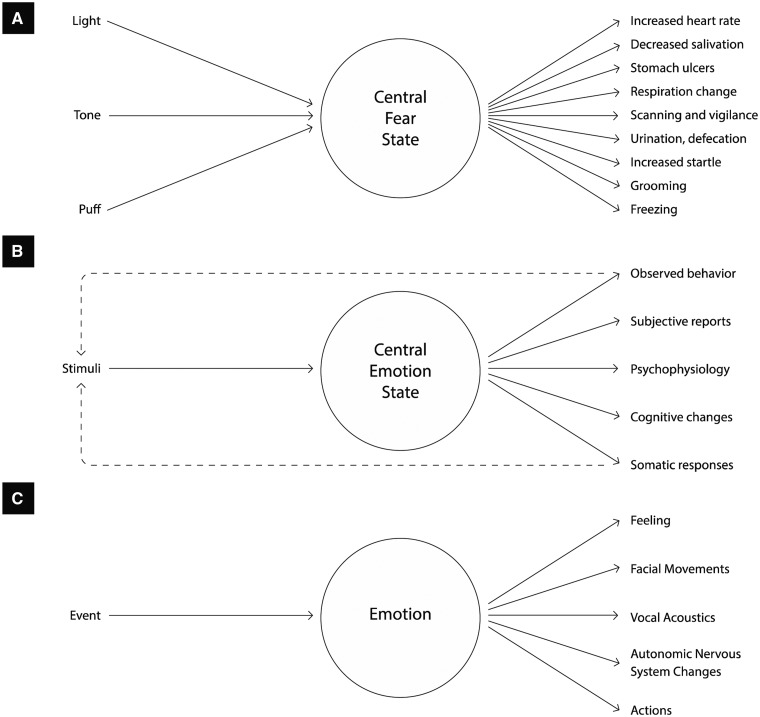Fig. 1.
The classical view of emotion. The classical view of emotion includes basic emotion theories (e.g. for a review, see Tracy and Randles, 2011), causal appraisal theories (e.g. Scherer, 2009; Roseman, 2011), and theories of emotion that rely on black-box functionalism (Davis, 1992; Anderson and Adolphs, 2014). Each emotion faculty is assumed to have its own innate ‘essence’ that distinguishes it from all other emotions. This might be a Lockean essence (an underlying causal mechanism that all instances of an emotion category share, making them that kind of emotion and not some other kind of emotion, depicted by the circles in the figure). Lockean essences might be a biological, such as a set of dedicated neurons, or psychological, such as a set of evaluative mechanisms called ‘appraisals’. An emotion category is usually assumed to have a Platonic essence [a physical fingerprint that instances of that emotion share, but that other emotions do not, such a set of facial movements (an ‘expression’), a pattern of autonomic nervous system activity, and/or a pattern of appraisals]. Of course, no one is expecting complete invariance, but it is assumed that instances of a category are similar enough to be easily diagnosed as the same emotion using objective (perceiver-independent) measures alone. (A) is adapted from Davis (1992). (B) is adapted Anderson and Adolphs (2014). (C) is adapted from Barrett (2006a), which reviews the growing evidence that contracts the classical view of emotion.

